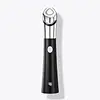What's inside
What's inside
 Key Ingredients
Key Ingredients

No key ingredients
 Benefits
Benefits

No benefits
 Concerns
Concerns

No concerns
 Ingredients Side-by-side
Ingredients Side-by-side

Water
Skin ConditioningGlycerin
HumectantPropanediol
SolventSoluble Collagen
HumectantGlycereth-26
HumectantCetyl Ethylhexanoate
EmollientCaprylic/Capric Triglyceride
MaskingPolyglyceryl-10 Laurate
Skin ConditioningNiacinamide
Smoothing1,2-Hexanediol
Skin ConditioningPolyglycerin-3
HumectantPentaerythrityl Tetraisostearate
EmollientAmmonium Acryloyldimethyltaurate/Vp Copolymer
Sodium Lauroyl Glutamate
Gardenia Florida Fruit Extract
Skin ConditioningButylene Glycol
HumectantDextrin
AbsorbentXanthan Gum
EmulsifyingHydroxyethyl Urea
HumectantEthylhexylglycerin
Skin ConditioningAdenosine
Skin ConditioningAllantoin
Skin ConditioningCollagen Extract
Skin ConditioningMacadamia Ternifolia Seed Oil
EmollientAtelocollagen
Skin ConditioningDesamido Collagen
Skin ConditioningHydrogenated Lecithin
EmulsifyingSodium Hyaluronate
HumectantHydrolyzed Elastin
EmollientHydrolyzed Collagen
EmollientCaprylyl Glycol
EmollientHyaluronic Acid
HumectantCholesterol
EmollientSodium Hyaluronate Crosspolymer
HumectantHydrolyzed Sodium Hyaluronate
Skin ConditioningHydrolyzed Hyaluronic Acid
HumectantSorbitan Laurate
EmulsifyingSilica
AbrasiveRetinal
Skin ConditioningGlutathione
Brassica Campestris Sterols
EmollientThioctic Acid
AntioxidantCeteth-5
EmulsifyingCeteth-3
EmulsifyingCollagen
MoisturisingCollagen Amino Acids
MoisturisingPotassium Cetyl Phosphate
EmulsifyingPentaerythrityl Tetra-Di-T-Butyl Hydroxyhydrocinnamate
AntioxidantHydroxyethylcellulose
Emulsion StabilisingAcetyl Dipeptide-1 Cetyl Ester
Skin ConditioningSodium Acetylated Hyaluronate
HumectantProcollagen
Skin ConditioningHydroxypropyltrimonium Hyaluronate
Acetyl Hexapeptide-1
Skin ConditioningPalmitoyl Tripeptide-5
Skin ConditioningDisodium EDTA
Acetyl Octapeptide-3
HumectantSoluble Collagen Crosspolymer
EmollientRosin Hydrolyzed Collagen
Skin ConditioningPotassium Myristoyl Hydrolyzed Collagen
Skin ConditioningParfum
MaskingWater, Glycerin, Propanediol, Soluble Collagen, Glycereth-26, Cetyl Ethylhexanoate, Caprylic/Capric Triglyceride, Polyglyceryl-10 Laurate, Niacinamide, 1,2-Hexanediol, Polyglycerin-3, Pentaerythrityl Tetraisostearate, Ammonium Acryloyldimethyltaurate/Vp Copolymer, Sodium Lauroyl Glutamate, Gardenia Florida Fruit Extract, Butylene Glycol, Dextrin, Xanthan Gum, Hydroxyethyl Urea, Ethylhexylglycerin, Adenosine, Allantoin, Collagen Extract, Macadamia Ternifolia Seed Oil, Atelocollagen, Desamido Collagen, Hydrogenated Lecithin, Sodium Hyaluronate, Hydrolyzed Elastin, Hydrolyzed Collagen, Caprylyl Glycol, Hyaluronic Acid, Cholesterol, Sodium Hyaluronate Crosspolymer, Hydrolyzed Sodium Hyaluronate, Hydrolyzed Hyaluronic Acid, Sorbitan Laurate, Silica, Retinal, Glutathione, Brassica Campestris Sterols, Thioctic Acid, Ceteth-5, Ceteth-3, Collagen, Collagen Amino Acids, Potassium Cetyl Phosphate, Pentaerythrityl Tetra-Di-T-Butyl Hydroxyhydrocinnamate, Hydroxyethylcellulose, Acetyl Dipeptide-1 Cetyl Ester, Sodium Acetylated Hyaluronate, Procollagen, Hydroxypropyltrimonium Hyaluronate, Acetyl Hexapeptide-1, Palmitoyl Tripeptide-5, Disodium EDTA, Acetyl Octapeptide-3, Soluble Collagen Crosspolymer, Rosin Hydrolyzed Collagen, Potassium Myristoyl Hydrolyzed Collagen, Parfum